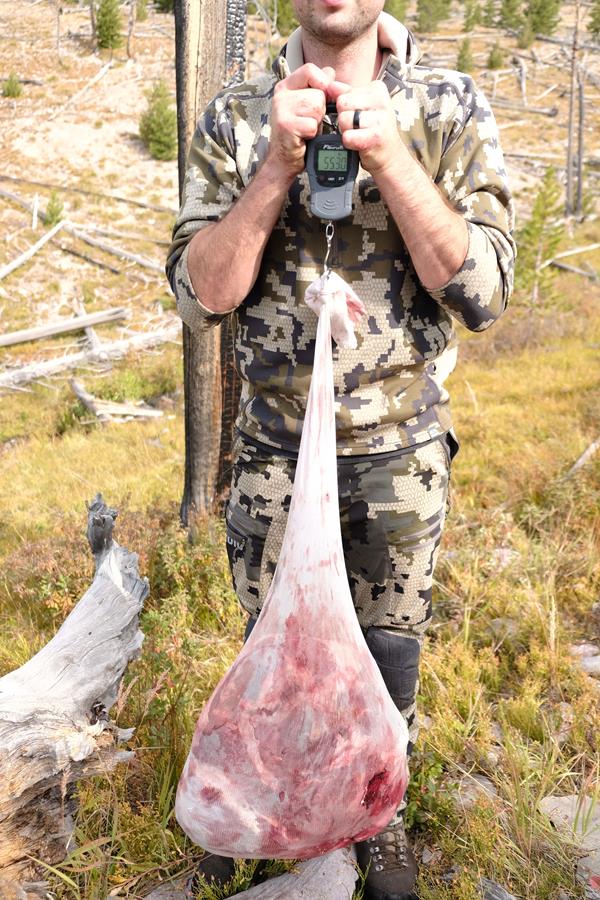
At some point, all of us as hunters hope we are going to have the problem of how we are going to pack out the big bull elk we just harvested miles from the truck. Each year as I plan hunts and look over maps of spots I want to hunt, the thought of, “How are we going to get this thing out if we kill one?” always seems to cross my mind. That thought always gets pushed to the back of the pile because it is a good problem to have. Of course, the fewer miles you have to pack one the better. However, sometimes you find yourself 10 miles from the truck scratching your head and debating on whether the reward of harvesting a bull is worth the trouble of getting it back to the coolers in a reasonable timeframe.
A pretty standard estimation of the amount of meat you will get off a mature bull is about 200 lbs., and that’s no bones or any extra, just pure meat. If you leave the bones in for the pack out along with the head and cape, you will add at least another 100-150 lbs. Add your day pack weight and gear to that and you are now probably close to 400 lbs. of meat/gear that needs to be hauled out. A guy who is in good shape should be able to carry at least 80 lbs. a good distance. With 80 lbs. each load, that comes out to five total trips, which can break most guys down.
This year, I took a scale with me on my hunt to see exactly how much weight a guy can eliminate by removing all of the bones from the four main elk quarters. The included table shows you just how much weight was saved by removing the bones.
Just in removing the bones from the four main quarters can save on average about 50 lbs. I know sometimes that it is nice to leave the bone in for the stability of packing, but if you are miles from the truck, removing all the bone might be something to consider. Another way to save weight is by removing the bottom jaw from the head without needing a saw. This can save you roughly another 10 lbs. Add those together and you have cut out 60+ lbs. of unneeded weight. That’s cutting out 12 lbs. per load, which can be a game changer over the miles.
Whichever method you prefer, always make sure the number one thing you consider is getting the meat cleaned, cooled off, and back to the truck in a timely manner. No one wants all of their hard-earned meat to spoil because you didn’t get it off the mountain in time. A good group of strong backs or a string of horses and mules can be worth their weight in gold in the right situation. Make sure you know what you are capable of and how much you can physically handle before you have a 600 lb. elk on the ground, wondering what to do next. Happy hunting!
| AMOUNT OF WEIGHT SAVED BY BONING OUT | |||
| Hind Quarter | Bone In = 67 lb. | Bone Out = 55 lbs | Weight Saved = 12 lbs |
| Front Shoulder | Bone In = 43 lbs | Bone Out = 31 lbs | Weight Saved = 12 lbs |
| Total Weight Saved 2x = 48 lbs | |||